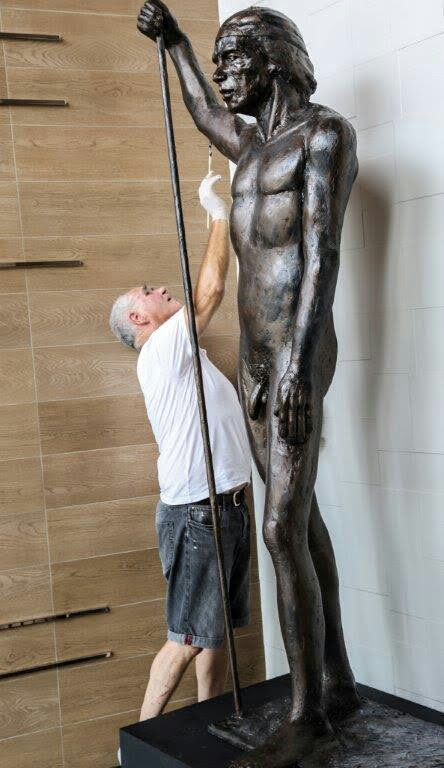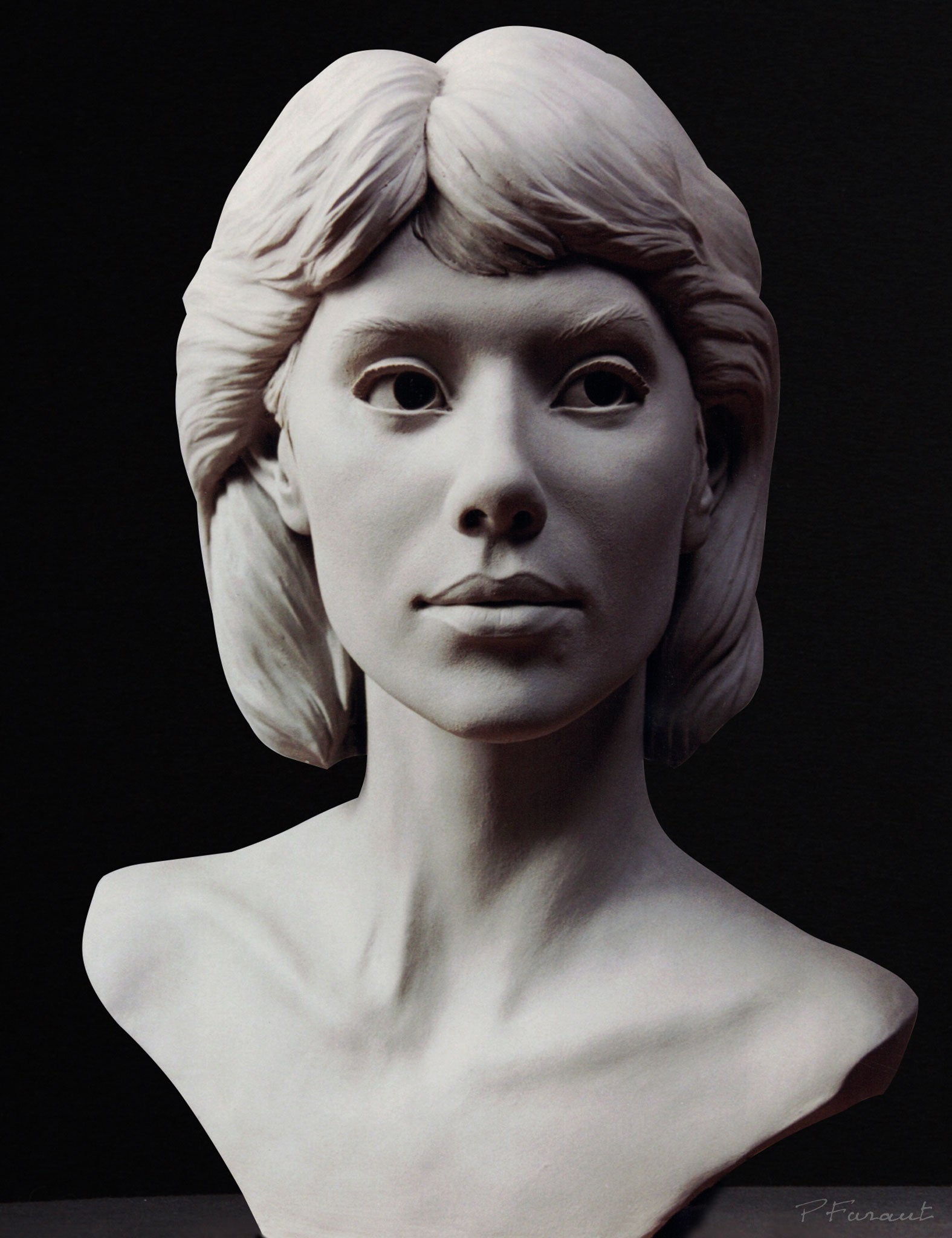Artistic Evolution: From Classic to Modern with Bronze Sculptures
Wiki Article
The Influence of Nature in Sculpture Art
The impact of nature in sculpture art is a subject that has captivated artists throughout background. From old civilizations to contemporary musicians, the environment has actually functioned as a profound resource of motivation. This influence appears in the organic forms and forms that are commonly discovered in sculpture, resembling the curves and shapes of nature. Carvers additionally check out texture and materials in their work, seeking to recreate the tactile high qualities of the environment. Symbolism of natural environments is another method which nature affects sculpture, as artists imbue their productions with the definition and organizations inherent in these components. The atmosphere itself, with its landscapes, plants, and fauna, is commonly mirrored in sculptures, offering a connection to the globe around us. Eventually, sculpture art has the power to record the transience of nature, cold a moment in time and enabling us to appreciate its beauty .Organic Shapes and kinds
Organic forms and shapes, inspired by the unified frameworks and intricate patterns located in nature, play a crucial role in the world of sculpture art. Sculptors have actually long been astounded by the elegance and intricacy of the natural globe, locating ideas in the graceful curves of a seashell, the delicate flowers of a flower, or the turning branches of a tree. By copying and extracting these organic forms, musicians have the ability to create sculptures that evoke a feeling of harmony and balance.One of the reasons natural types and shapes are so common in sculpture art is their ability to connect with customers on a deep emotional degree. The environment knows to us all, and when we see these kinds represented in art, it evokes a sense of comfort and recognition. It advises us of our place in the grand system of things and enables us to get in touch with something higher than ourselves.
Furthermore, organic types and shapes in sculpture art commonly embody a sense of activity and energy. The streaming lines and vibrant make-ups imitate the consistent motion and growth located in nature. This creates a sense of vitality and brings sculptures to life, making them appear as if they can remain to develop and alter before our eyes.
Texture and Product Expedition
A significant facet of sculpture art influenced naturally is the expedition of texture and products through using numerous strategies and tools. Musicians commonly draw motivation from the diverse structures discovered in the environment, such as the harsh bark of a tree, the smooth surface of a stone, or the elaborate patterns on a leaf. By incorporating these appearances right into their work, carvers can develop a tactile experience for visitors, inviting them to engage with the artwork on a sensory level.Structure can be attained in sculpture through a range of approaches. Some artists select to sculpt or form directly into the selected material, producing a three-dimensional surface area that resembles the appearances found in nature - Figurative Sculptures.
Product expedition is additionally a significant component of sculpture art affected by nature. Artists may venture into uncharted region, looking for new materials that evoke the essence of the environment. They may incorporate natural aspects like branches, leaves, or even soil right into their sculptures, obscuring the boundaries in between art and the setting. By pushing the boundaries of typical materials and techniques, sculptors can create conceptually abundant and aesthetically stunning works that commemorate the charm and diversity of nature.
Significance of Natural Environments
The incorporation of natural environments in sculpture art adds a layer of significance and depth to the art work. By using products discovered in nature, carvers have the ability to imbue their developments with definition that resonates with visitors on a profound degree. Natural environments such as timber, rock, and plants have been made use of throughout history to convey numerous symbolic messages.Wood, for instance, commonly represents stamina, durability, and development. Sculptures crafted from this product can evoke a feeling of link to the earth and the cycles of life. Stone, on the various other hand, is frequently related to permanence and endurance. Sculptures sculpted from stone can symbolize the ageless nature of certain concepts or principles.
Flowers and plants are also frequently included right into sculpture art, standing for themes of renewal, beauty, and development. The fragile flowers and vibrant shades of flowers can evoke sensations of joy, while the linking branches of plants can represent interconnectedness and unity.
In enhancement to these all-natural products, artists may additionally utilize natural elements such as water, wind, or fire to further boost the symbolic message of their art work. These components can stand for the transformative power of nature, the passage of time, or the pressures that shape our world.

Reflections of the Setting
Reflections of the Atmosphere can be seen in sculpture art with the consolidation of natural environments and the portrayal of ecological styles. Artists commonly attract ideas from the setting, utilizing products such as timber, rock, and even recycled products to produce their artworks. By utilizing these natural environments, they not just admire the setting yet additionally develop a more powerful link between the art work and its surroundings.Along with the products utilized, sculpture art also reflects the environment via the representation of eco-friendly themes. Lots of sculptors choose to show animals, plants, or landscapes in their job, highlighting the elegance and frailty of the natural globe. These sculptures offer as suggestions of the value of preserving our atmosphere and the requirement for lasting techniques.

In addition, ecological sculptures commonly aim to increase understanding about pressing ecological problems. They function as visual depictions of the influence of human tasks on the environment, such as climate, air pollution, or deforestation change. By depicting these concerns in their art work, carvers wish to inspire visitors to take action and become extra conscious of their very own ecological footprint.
Recording the Transience of Nature
Sculpture artists even more check out the impact of nature by masterfully capturing the ever-changing and ephemeral elements of the environment. Through their artistry, these artists aim to depict the short lived charm and transience of nature, stimulating a feeling of marvel and reflection in audiences.One method which sculpture artists record the transience of nature is by utilizing materials that are themselves subject to degeneration and adjustment. For instance, musicians might choose to collaborate with organic materials such as fallen leaves, blossoms, or wood, which naturally degrade with time. This intentional option highlights the impermanence of nature and advises us of the inevitable cycle of life and fatality.
Furthermore, sculpture artists usually utilize techniques that develop a sense of motion and fluidity in their work. By incorporating flowing lines and dynamic types, they share the ever-changing nature of the all-natural world. This can be seen in sculptures influenced by wind, water, or the development of plants, where the artist seeks to capture the significance of constant movement and transformation.
Additionally, some musicians select to create short-term or site-specific installments that engage with the setting. These ephemeral sculptures, made from materials such as ice, sand, or light, are intentionally designed to progressively vanish or change gradually. By accepting the short-term nature of their developments, musicians welcome visitors to assess the fleeting beauty of the all-natural globe and the brevity of human presence.

Conclusion
In final thought, nature has an extensive impact on sculpture art. Via the usage of natural kinds and forms, musicians are able to evoke a sense of natural beauty and consistency. Texture and material exploration better boost the link to nature, as artists commonly include all-natural materials into their sculptures. Importance of natural elements includes depth and indicating to the art work, while reflections of the atmosphere capture the significance of nature. Eventually, sculpture art captures the transience of nature Robert C Hitchcock Sculptor and celebrates its eternal influence.
Importance of all-natural components is an additional method in which nature affects sculpture, as musicians imbue their developments with the definition and organizations fundamental in these elements.A substantial element of sculpture art affected by nature is the exploration of appearance and materials with the usage of different methods and tools (Bronze Sculptures).Product exploration is additionally a considerable part of sculpture art affected by nature.One method in which sculpture musicians catch the transience of nature is by making use of products that are themselves subject to degeneration and change. Appearance and material exploration additionally improve the connection to nature, as artists frequently integrate all-natural materials into their sculptures
Report this wiki page